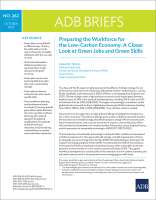
Southeast Asian countries should prepare its workforce for Industry 4.0. Photo credit: iStock/mnbb.
Arming the workforce with Fourth Industrial Revolution skills is key.
Southeast Asia is bound to see job losses as industries embrace Fourth Industrial Revolution (4IR) technologies, but by 2030, more jobs will be created than displaced in the region owing to these highly disruptive tech, according to an Asian Development Bank (ADB) study.
The ADB report, Reaping the Benefits of Industry 4.0 through Skills Development in High-Growth Industries in Southeast Asia: Insights from Cambodia, Indonesia, the Philippines, and Viet Nam, said 4IR could have transformative impacts on jobs and skills, while returns to businesses could be large. 4IR or Industry 4.0 refers to new technologies that include the Internet of Things, artificial intelligence, cloud computing, and cognitive computing.
The report focused on industries that are important for growth, employment, and 4IR in each country. It focused on tourism and garments in Cambodia, food and beverage manufacturing and automotive manufacturing in Indonesia, information technology and business process outsourcing and electronics in the Philippines, and agro-processing and logistics in Viet Nam.
It noted that while 4IR could displace up to a third of the agro-processing workforce in Viet Nam, these technologies can also generate new labor demand. The study estimates a positive net effect in all sectors analyzed: 39% for garments and 2% for tourism in Cambodia, 14% for food and beverage manufacturing and 1% for automotive manufacturing in Indonesia, 11% for information technology and business process outsourcing and 10% for electronics in the Philippines, and 34% for agro-processing and 12% for logistics in Viet Nam.
The study warned that many displaced workers will likely lack the skills they need to move seamlessly into new jobs without adequate and timely investments in skills development. Southeast Asia can only fully reap the benefits of 4IR if it prepares its workforce for the future of work, the report said.
Policy recommendations
It recommended the following to prepare Southeast Asia for 4IR.
1. Develop 4IR transformation road maps for key sectors. The report said all four countries should consider developing industry transformation maps to provide information on technology impacts, career pathways, the skills required for various occupations, and the reskilling options available.
2. Develop industry-led TVET programs targeting skills for 4IR. Developing and strengthening technical and vocational education and training (TVET) programs focused on 4IR should build on existing mechanisms to engage industry. The report cited Generation, an independent nonprofit founded by global management consulting firm McKinsey & Company, as a good example of an industry-led program. Of the more than 30,000 people who have graduated from its programs in 13 countries, 81% were employed by 3 months after graduation and earning salaries 2–6 times higher than previously.
3. Upgrade training delivery through 4IR technology in classrooms and training facilities. With limited adoption of 4IR in classrooms, greater deployment of new technologies such as virtual reality, augmented reality, and virtual simulation would strengthen workforce readiness. Digital platforms should also be explored to deliver skills training, the study said.
4. Develop flexible and modular skills certification programs. Such programs should recognize skills attainment outside of traditional education channels. Given large requirements for new and upgraded skills, industry-led certification of workers’ gradual mastery of skills is required.
5. Formulate new approaches and measures to strengthen inclusion and social protection under 4IR. Such programs should cover training for three types of workers—entry level, those at risk of job displacement, and those who need upskilling. One approach is through online learning channels. Another is to offer skills development programs for specific underserved groups. Providing financial incentives for employers to train specific underserved communities is another option.
6. Implement an incentive scheme for firms to train employees for 4IR. With employer training rates remaining low in all countries, a set of support programs should be developed to encourage firms to invest in 4IR training for their workers. A good start would be to prepare guidelines and incentive frameworks supported by robust cost–benefit analysis.


